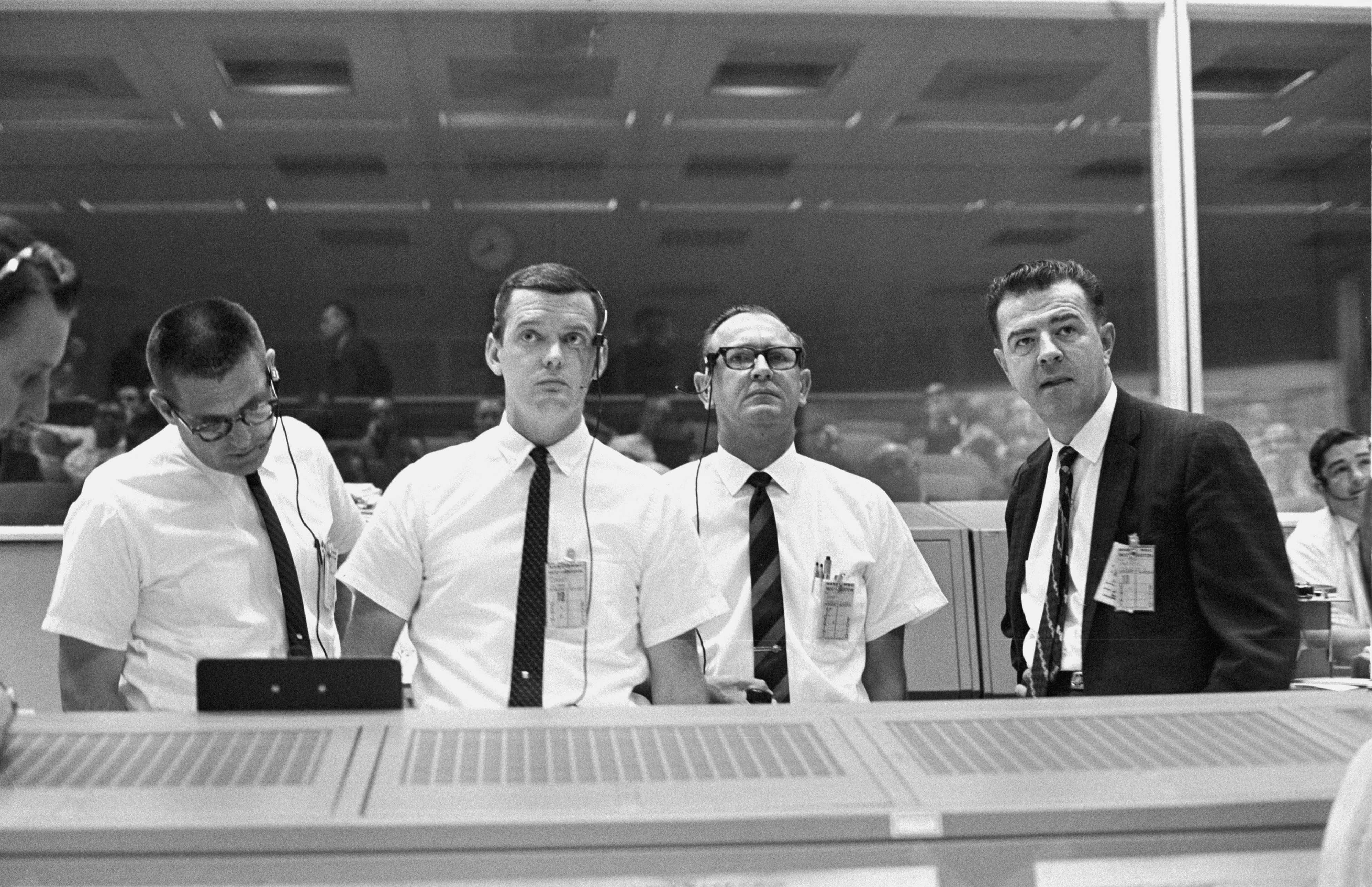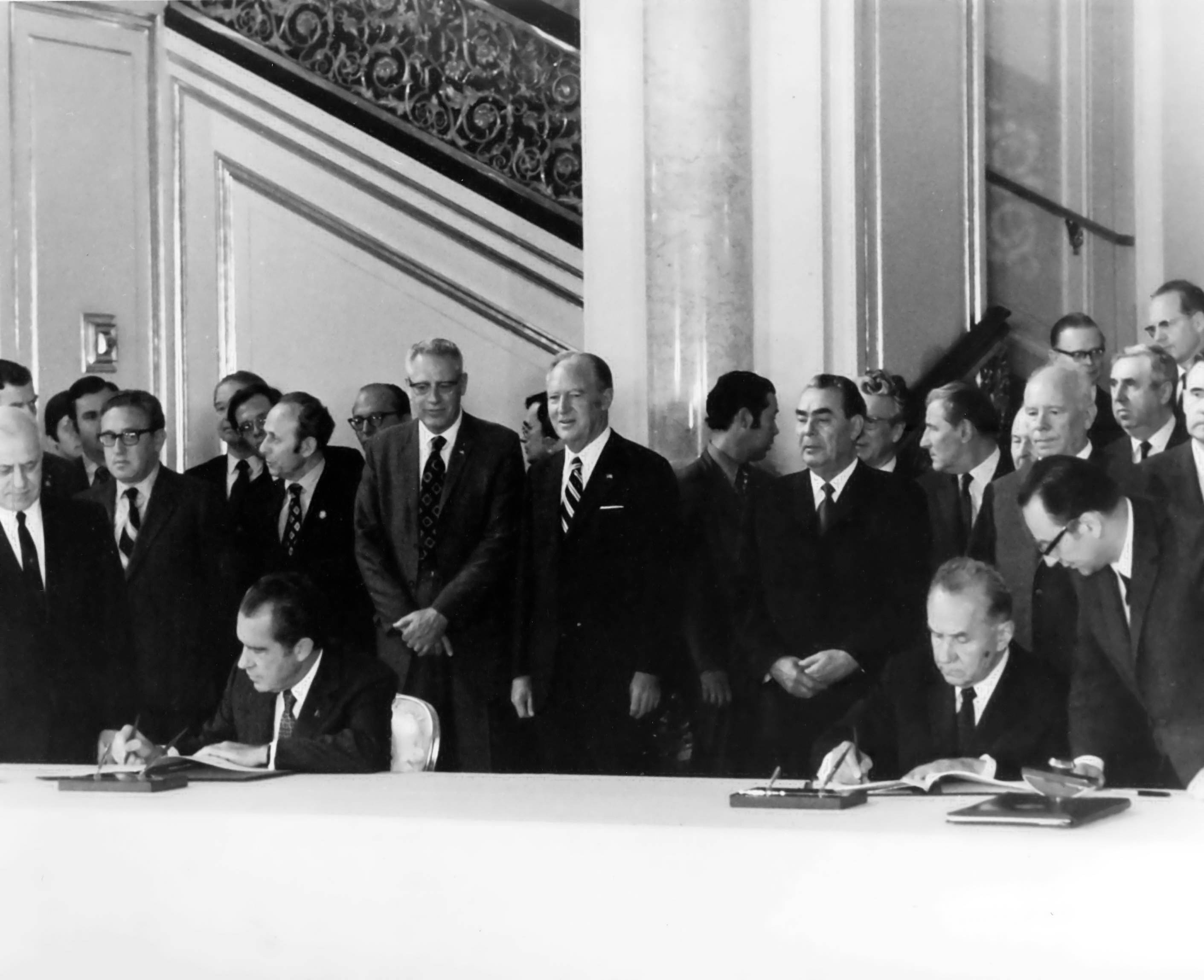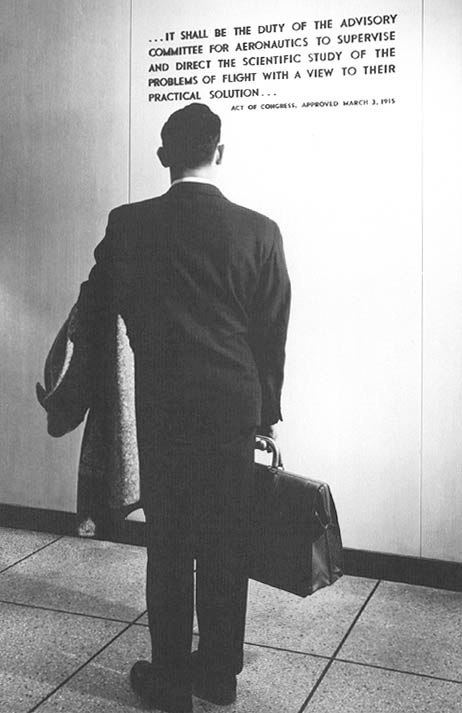|
Glynn Lunney
Glynn Stephen Lunney (November 27, 1936 – March 19, 2021) was an American NASA engineer. An employee of NASA since its creation in 1958, Lunney was a flight controller, flight director during the Project Gemini, Gemini and Project Apollo, Apollo programs, and was on duty during historic events such as the Apollo 11 moon, lunar ascent and the pivotal hours of the Apollo 13 crisis. At the end of the Apollo program, he became manager of the Apollo–Soyuz, Apollo–Soyuz Test Project, the first collaboration in spaceflight between the United States and the Soviet Union. Later, he served as manager of the Space Shuttle program before leaving NASA in 1985 and later becoming a vice president of the United Space Alliance. Lunney was a key figure in the US human spaceflight program from Project Mercury through the coming of the Space Shuttle. He received numerous awards for his work, including the National Space Trophy, which he was given by the Rotary Club in 2005. Chris Kraft, NASA' ... [...More Info...] [...Related Items...] OR: [Wikipedia] [Google] [Baidu] |
Apollo–Soyuz
Apollo–Soyuz was the first crewed international Space exploration, space mission, carried out jointly by the United States and the Soviet Union in July 1975. Millions of people around the world watched on television as an American Apollo command and service module, Apollo spacecraft Docking and berthing of spacecraft, docked with a Soviet Soyuz (spacecraft), Soyuz capsule. The project, and its "handshake" in space, was a symbol of détente between the two superpowers amid the Cold War. The Americans officially called the mission the Apollo–Soyuz Test Project (ASTP) while the Soviets called it Experimental flight "Soyuz"–"Apollo" () and Soyuz 19. The unnumbered American spacecraft was left over from canceled Apollo missions and was the last Apollo module to fly. The mission consisted of three American astronauts (Thomas P. Stafford, Vance D. Brand, and Deke Slayton) and two Soviet cosmonauts (Alexei Leonov and Valery Kubasov) who performed both joint and separate scientifi ... [...More Info...] [...Related Items...] OR: [Wikipedia] [Google] [Baidu] |
Project Mercury
Project Mercury was the first human spaceflight program of the United States, running from 1958 through 1963. An early highlight of the Space Race, its goal was to put a man into Earth orbit and return him safely, ideally before the Soviet Union. Taken over from the US Air Force by the newly created civilian space agency NASA, it conducted 20 uncrewed developmental flights (some using animals), and six successful flights by astronauts. The program, which took its name from Roman mythology, cost $ (adjusted for inflation). The astronauts were collectively known as the " Mercury Seven", and each spacecraft was given a name ending with a "7" by its pilot. The Space Race began with the 1957 launch of the Soviet satellite Sputnik 1. This came as a shock to the American public, and led to the creation of NASA to expedite existing US space exploration efforts, and place most of them under civilian control. After the successful launch of the Explorer 1 satellite in 1958, crewed spac ... [...More Info...] [...Related Items...] OR: [Wikipedia] [Google] [Baidu] |
National Aeronautics And Space Administration
The National Aeronautics and Space Administration (NASA ) is an independent agency of the US federal government responsible for the United States's civil space program, aeronautics research and space research. Established in 1958, it succeeded the National Advisory Committee for Aeronautics (NACA) to give the American space development effort a distinct civilian orientation, emphasizing peaceful applications in space science. It has since led most of America's space exploration programs, including Project Mercury, Project Gemini, the 1968–1972 Apollo program missions, the Skylab space station, and the Space Shuttle. Currently, NASA supports the International Space Station (ISS) along with the Commercial Crew Program and oversees the development of the Orion spacecraft and the Space Launch System for the lunar Artemis program. NASA's science division is focused on better understanding Earth through the Earth Observing System; advancing heliophysics through the effor ... [...More Info...] [...Related Items...] OR: [Wikipedia] [Google] [Baidu] |
B-57 Canberra
The Martin B-57 Canberra is an American-built, twin-engined tactical bomber and reconnaissance aircraft that entered service with the United States Air Force (USAF) in 1953. The B-57 is a license-built version of the British English Electric Canberra, manufactured by the Glenn L. Martin Company. Initial Martin-built models were virtually identical to their British-built twinjet counterparts; Martin later modified the design to incorporate larger quantities of US-sourced components and produced the aircraft in several variants. The B-57 Canberra holds the distinction of being the first jet bomber in U.S. service to drop bombs during combat. The Canberra was used extensively during the Vietnam War in a bombing capacity; specialized versions of the type were also produced and served as high-altitude aerial reconnaissance platforms (the Martin RB-57D Canberra), and as electronic warfare aircraft. The B-57 Canberra was also sold to export customers abroad; further combat use wa ... [...More Info...] [...Related Items...] OR: [Wikipedia] [Google] [Baidu] |
Aerospace Engineering
Aerospace engineering is the primary field of engineering concerned with the development of aircraft and spacecraft. It has two major and overlapping branches: aeronautical engineering and astronautical engineering. Avionics engineering is similar, but deals with the electronics side of aerospace engineering. "Aeronautical engineering" was the original term for the field. As flight technology advanced to include vehicles operating in outer space, the broader term "aerospace engineering" has come into use. Aerospace engineering, particularly the astronautics branch, is often colloquially referred to as "rocket science". Overview Flight vehicles are subjected to demanding conditions such as those caused by changes in atmospheric pressure and temperature, with structural loads applied upon vehicle components. Consequently, they are usually the products of various technological and engineering disciplines including aerodynamics, air propulsion, avionics, materials science, st ... [...More Info...] [...Related Items...] OR: [Wikipedia] [Google] [Baidu] |
Bachelor Of Science
A Bachelor of Science (BS, BSc, B.S., B.Sc., SB, or ScB; from the Latin ') is a bachelor's degree that is awarded for programs that generally last three to five years. The first university to admit a student to the degree of Bachelor of Science was the University of London in 1860. In the United States, the Lawrence Scientific School first conferred the degree in 1851, followed by the University of Michigan in 1855. Nathaniel Shaler, who was Harvard's Dean of Sciences, wrote in a private letter that "the degree of Bachelor of Science came to be introduced into our system through the influence of Louis Agassiz, who had much to do in shaping the plans of this School." Whether Bachelor of Science or Bachelor of Arts degrees are awarded in particular subjects varies between universities. For example, an economics student may graduate as a Bachelor of Arts in one university but as a Bachelor of Science in another, and occasionally, both options are offered. Some universities follo ... [...More Info...] [...Related Items...] OR: [Wikipedia] [Google] [Baidu] |
National Advisory Committee For Aeronautics
The National Advisory Committee for Aeronautics (NACA) was a United States federal agency that was founded on March 3, 1915, to undertake, promote, and institutionalize aeronautical research. On October 1, 1958, the agency was dissolved and its assets and personnel were transferred to the newly created National Aeronautics and Space Administration (NASA). NACA is an initialism, pronounced as individual letters rather than as a whole word, as was NASA during the early years after being established. Among other advancements, NACA research and development produced the NACA duct, a type of air intake used in modern automotive applications, the NACA cowling, and several series of NACA airfoils, which are still used in aircraft manufacturing. During World War II, NACA was described as "The Force Behind Our Air Supremacy" due to its key role in producing working superchargers for high altitude bombers, and for producing the laminar wing profiles for the North American P-51 Mustan ... [...More Info...] [...Related Items...] OR: [Wikipedia] [Google] [Baidu] |
Cleveland, Ohio
Cleveland is a city in the U.S. state of Ohio and the county seat of Cuyahoga County, Ohio, Cuyahoga County. Located along the southern shore of Lake Erie, it is situated across the Canada–United States border, Canada–U.S. maritime border and approximately west of the Ohio-Pennsylvania state border. Cleveland is the most populous city on Lake Erie, the list of cities in Ohio, second-most populous city in Ohio, and the List of United States cities by population, 53rd-most populous city in the U.S. with a population of 372,624 in 2020. The city anchors the Greater Cleveland, Cleveland metropolitan area, the Metropolitan statistical area, 33rd-largest in the U.S. at 2.18 million residents, as well as the larger Cleveland–Akron, Ohio, Akron–Canton, Ohio, Canton combined statistical area with 3.63 million residents. Cleveland was founded in 1796 near the mouth of the Cuyahoga River as part of the Connecticut Western Reserve in modern-day Northeast Ohio by General Moses Clea ... [...More Info...] [...Related Items...] OR: [Wikipedia] [Google] [Baidu] |
Lewis Research Center
NASA John H. Glenn Research Center at Lewis Field is a NASA center within the cities of Brook Park and Cleveland between Cleveland Hopkins International Airport and the Rocky River Reservation of Cleveland Metroparks, with a subsidiary facility in Sandusky, Ohio. Its director is James A. Kenyon. Glenn Research Center is one of ten major NASA facilities, whose primary mission is to develop science and technology for use in aeronautics and space. , it employed about 1,650 civil servants and 1,850 support contractors on or near its site. In 2010, the formerly on-site NASA Visitors Center moved to the Great Lakes Science Center in the North Coast Harbor area of downtown Cleveland. History The installation was established in 1942 as part of the National Advisory Committee for Aeronautics (NACA) and was later incorporated into the National Aeronautics and Space Administration as a laboratory for aircraft engine research. It was first named the Aircraft Engine Research Laborator ... [...More Info...] [...Related Items...] OR: [Wikipedia] [Google] [Baidu] |
University Of Detroit
The University of Detroit Mercy is a private Catholic university in Detroit, Michigan, United States. It is sponsored by both the Society of Jesus (Jesuits) and the Sisters of Mercy. The university was founded in 1877 and is the largest Catholic university in Michigan. It has four campuses where it offers more than 100 academic degree programs. In athletics, the university sponsors 17 NCAA Division I sports for men and women. It is a member of the Horizon League. History University of Detroit Mercy's origin dates back to 1877 with the founding of Detroit College near Detroit's downtown, by the Society of Jesus, under the leadership of John Baptist Miège, S.J. The college became the University of Detroit in 1911, and in 1927 John P. McNichols, the then-president of the University of Detroit, established a second campus that ended up being known by its Spanish architecture and large elm trees. In 1941, the Sisters of Mercy opened Mercy College of Detroit. Both schools saw a ... [...More Info...] [...Related Items...] OR: [Wikipedia] [Google] [Baidu] |
University Of Scranton
The University of Scranton is a private Jesuit university in Scranton, Pennsylvania. It was founded in 1888 by William O'Hara, the first Bishop of Scranton, as St. Thomas College. In 1938, the college was elevated to university status and took the name The University of Scranton. The institution was operated by the Diocese of Scranton from its founding until 1897. While the Diocese of Scranton retained ownership of the university, it was administered by the Lasallian Christian Brothers from 1888 to 1942. In 1942, the Society of Jesus took ownership and control of the university. During the 1960s, the university became an independent institution under a lay board of trustees. The university is composed of three colleges that each contain both undergraduate and graduate programs. It offers 65 bachelor's degrees, 29 master's degrees, and 4 doctoral programs. The university enrolls approximately 6,000 graduate and undergraduate students. Most of its students are from Pennsylvani ... [...More Info...] [...Related Items...] OR: [Wikipedia] [Google] [Baidu] |
Scranton Preparatory School
Scranton Preparatory School is a co-educational Jesuit high school located in Scranton, Pennsylvania, United States. History Scranton Prep opened its doors in 1944. At the request of the Roman Catholic Diocese of Scranton and of Catholic families in the area, the Jesuits who had recently assumed ownership of the University of Scranton began preparations to open a college preparatory school in the Scranton area. Led by the university's president, W. Coleman Nevils, the Jesuits renovated a building known as the “Annex” on the corner of Mulberry Street and Wyoming Avenue for the high school. The Annex, formerly the Dr. Charles E. Thomson Scranton Private Hospital, was acquired by William Hafey in 1941. Although he had intended for it to be used by the university to expand its facilities, the Second World War in Europe had caused the college’s enrollment to decline precipitously and made such expansions unnecessary. After renovations were completed, the high school was opened i ... [...More Info...] [...Related Items...] OR: [Wikipedia] [Google] [Baidu] |








